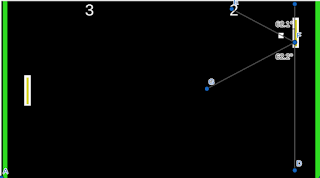Guerilla Gardening and the Three Little Soils.
In our first unit of FOOD class, we have discussed ecosystems, mathematical
inequalities, and soil quality for gardening. We also had the opportunity to
visit the Plant Chicago, which is an organic gardening space that uses
aquaponics to provide nutrients to the soil. There, we tested soil quality, much
like we did in class. We learned about the three types of nitrogen found in
soil: ammonia, nitrites, and nitrates.
We also returned to in-person school for two days a week. It's fun to be in the classroom with everyone again. (We miss
you RL and LA!)
Our Action Project is building on a theme that Rock (our leader
at the Plant Chicago) talked to us about: anyone can be a farmer. And another
video showing a "guerilla gardener" in Los Angeles made the same point: anyone,
anywhere, can farm. So, for our action project, we are going to grow three
plants. The difference: the soil quality between the three gardening containers.
Now, our three plants will be in three separate containers. I chose very basic
plant pots. Mine were in the shape of a circle on top. Measuring them, I found
the pots to have a radius of 2.5 inches. The pot was 4 inches tall.
AREA: circle = pi * r^2 = pi * 2.5^2 = pi * 2.5*2.5 = 6.25 * pi = 19.6 square inches.
VOLUME = Base * height = 19.6 * 4inches = 78.4 cubic inches
So I need 78.4 cubic inches of soil for my three pots!
[note: insert photo of pots here]
Now, having three different pots with three seeds is gardening! But, it's not an ecosystem. We also read a Chapter from a book about a Japanese rice farmer, Fukuoka, who does not use any fertilizer on his plants. He calls it one of his "Four Principles of Natural Farming". But with a larger farm I think it would be easier to create an ecosystem that doesn't need fertilizer. In my tiny garden, I will need the benefit of fertilizers to add nutrients to my plants!
However, if I had a larger garden and could grow "companion plants" that benefit one another like Fukuoka, I would grow corn, beans, and squash. The tall corn lets the beans climb up, and the squash covers the ground, to prevent weeds from growing as much. Plus, I love corn! Mmm, so tasty.
Now, it's time to conduct a scientific experiment for my three garden plants!


Comments
Post a Comment